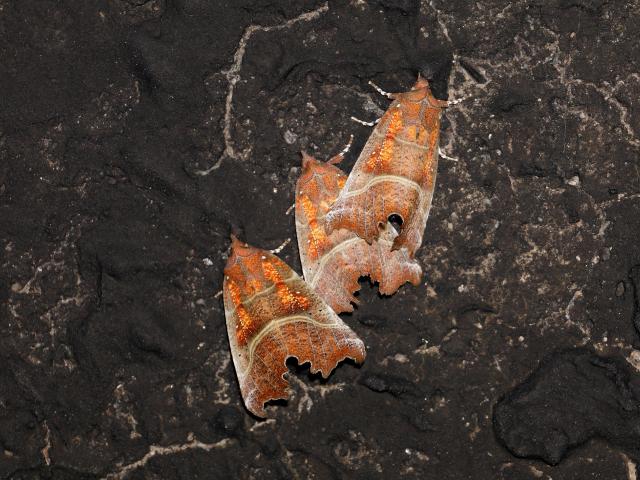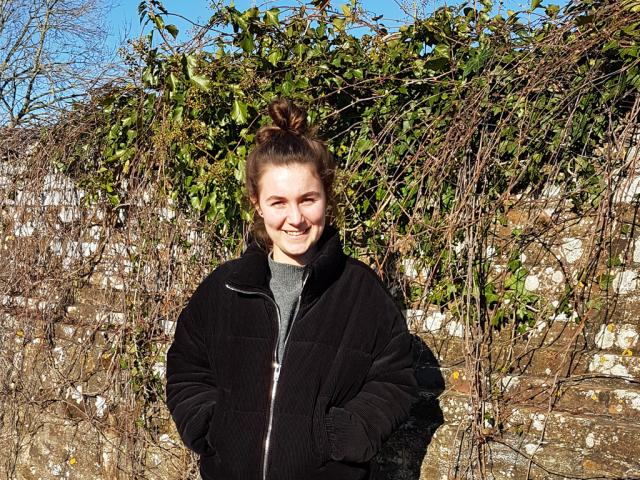BC Volunteer, Anabel Boakes
In support of the Government's Year of Green Action and our #iwill4nature pledge, Butterfly Conservation are hoping to connect more young people than ever before with wildlife this year, teaching them about butterflies and moths and inspiring them to take part in social action to improve the natural environment.
Meet our newest volunteer: 16-year-old Anabel Boakes from Dorset...
I’ve always had an interest in wildlife and growing up I spent a lot of time at my local stables, helping to look after the horses and enjoying hacks in the countryside. I still spend a lot of time outside doing kayaking and other sports and I’ve often seen butterflies, especially in my garden at home, but I didn’t know much about them.
It was when I was out riding in East Lulworth that I first saw the sign for Butterfly Conservation (BC) and later discovered that this was a UK-wide wildlife charity and their head office was based right here in Dorset. I was interested in finding out more, so it seemed the perfect place for me to volunteer as part of my A-level work experience placement.
I only spent a week at BC, but in that time I learnt that the charity’s primary aim is to save butterflies, moths and our environment. Did you know that butterflies and moths are the universal indicators of a healthy environment?! I didn’t!
It was really interesting to meet all the people working for the charity and to see the different jobs they do. I met conservation experts and the team who go into schools to educate kids about the importance of butterflies and moths. I also learnt about marketing and how to use websites and social media to promote the charity and its work. Everyone was so enthusiastic about what they do and I didn’t realise there could be so many different jobs at a charity.
I did some research work to help the marketing and media teams, which really expanded my knowledge on butterflies and moths. I learnt that there are 59 species of butterfly in the UK and 2500 moths! I helped upload volunteer events to the charity website, which talked about the Silver-washed Fritillary, the Purple Hairstreak and the Wood White - which is actually really rare in England.

I also got a chance to look in a moth trap – something I’ve never done before! Inside the trap we found an Oak Beauty and a few Pale Brindled Beauty’s. Traps don’t hurt moths, but they help people to see what species are around and how well they are doing. We also found some hibernating Herald Moths in the shed next to the office.
My time at the charity also made me realise just how much butterflies and moths are struggling in the UK. In the last 150 years, four butterflies became extinct and three-quarters of British butterflies are now in decline. Two-thirds of common and widespread moths have also declined in the last 40 years.
I learnt that issues like habitat loss and the use of pesticides are partly to blame, but climate change is also a big worry and I didn’t realise that it is already affecting butterfly and moth numbers and where they are found.
In February this year, young people from all over the UK walked out of lessons as part of “Schools 4 Climate Action”, hoping to force the Government and politicians to be more proactive in tackling climate change before it is too late.

Although my school didn’t join in with the walkouts, some of the students did write a letter to our local conservative MP, Michael Tomlinson, to “express our grave concerns regarding the catastrophic climate change” and the fact that “Government policy seems to be focussing more on a strategy of adaption, preparing for higher temperatures and the increased risk of flooding and drought, rather than tackling the direct cause of climate change”.
I think it’s so important that young people everywhere are made aware of climate change and the need to do something about it now.
I’ve learnt that insects like butterflies and moths are some of the first affected and they play such a vital role in the food chain and the ecosystems that we depend upon. That’s why volunteering for a wildlife charity is so important – so we can all play a part in helping before it’s too late.
I would like to say thank-you to everyone at Butterfly Conservation for inviting me into their world for a week. The whole experience has definitely inspired me to participate in conservation activities in the future. #iwill4nature - will you?
Anabel Boakes
- What is the Year of Green Action?
The government’s 2019 Year of Green Action [YoGA] is a year-long drive to see more people from all backgrounds involved in projects to improve the natural world and support nature – in our own gardens, schools or workplaces, and as consumers.
Examples of green action include taking part in environmental volunteering, or planting pollinator-friendly flowers, taking part in citizen science projects like the Big Butterfly Count, fundraising to maintain or enhance green spaces or campaigning for the zero plastic waste agenda.
- What is #iwill4nature all about?
This movement is about placing young people at the heart of environmental action during the Year of Green Action. To help achieve this, Butterfly Conservation has pledged to:
-Inspire and empower young people to get involved in social action.
-Develop new, youth-friendly social action opportunities.
-Promote and celebrate the positive role young people can play through social action.


